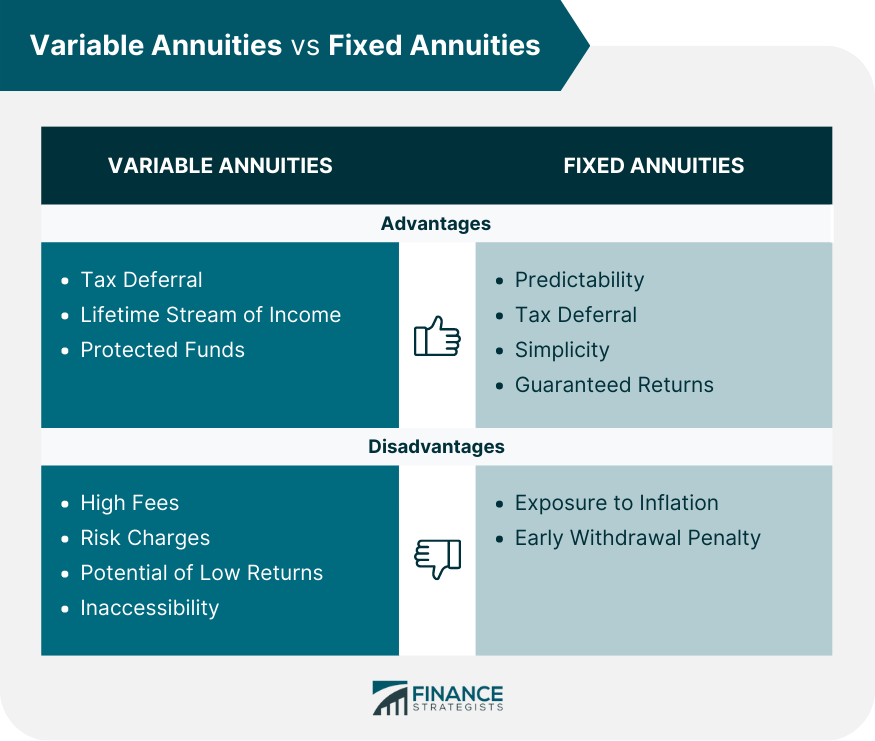All Categories
Featured
Table of Contents
The repayment could be invested for growth for a lengthy period of timea solitary costs deferred annuityor spent for a brief time, after which payment beginsa single premium instant annuity. Solitary premium annuities are often funded by rollovers or from the sale of a valued property. A flexible costs annuity is an annuity that is intended to be funded by a collection of repayments.
Owners of fixed annuities recognize at the time of their acquisition what the value of the future capital will certainly be that are generated by the annuity. Certainly, the number of money circulations can not be understood ahead of time (as this relies on the agreement proprietor's life-span), but the guaranteed, fixed interest price a minimum of provides the proprietor some degree of assurance of future earnings from the annuity.
While this difference seems straightforward and straightforward, it can considerably impact the worth that a contract proprietor inevitably derives from his/her annuity, and it develops significant uncertainty for the contract owner - Investment options in variable annuities. It also normally has a product impact on the level of fees that a contract proprietor pays to the providing insurance policy company
Set annuities are usually made use of by older financiers who have actually limited assets yet that wish to counter the risk of outlasting their assets. Fixed annuities can work as an efficient tool for this function, though not without specific disadvantages. In the case of immediate annuities, once a contract has actually been purchased, the agreement owner gives up any kind of and all control over the annuity possessions.
Highlighting the Key Features of Long-Term Investments Key Insights on Your Financial Future Breaking Down the Basics of Investment Plans Benefits of Choosing the Right Financial Plan Why Choosing the Right Financial Strategy Is Worth Considering How to Compare Different Investment Plans: Simplified Key Differences Between Fixed Vs Variable Annuities Understanding the Rewards of Retirement Income Fixed Vs Variable Annuity Who Should Consider Fixed Vs Variable Annuity Pros Cons? Tips for Choosing Retirement Income Fixed Vs Variable Annuity FAQs About Fixed Vs Variable Annuity Pros Cons Common Mistakes to Avoid When Choosing Fixed Annuity Or Variable Annuity Financial Planning Simplified: Understanding Retirement Income Fixed Vs Variable Annuity A Beginner’s Guide to Smart Investment Decisions A Closer Look at How to Build a Retirement Plan
A contract with a typical 10-year abandonment period would charge a 10% abandonment charge if the contract was given up in the initial year, a 9% surrender fee in the 2nd year, and so on till the surrender fee reaches 0% in the agreement's 11th year. Some delayed annuity contracts consist of language that enables small withdrawals to be made at various periods throughout the abandonment period scot-free, though these allocations typically come with an expense in the type of reduced guaranteed rate of interest.
Just as with a taken care of annuity, the owner of a variable annuity pays an insurance coverage firm a lump sum or series of settlements for the assurance of a collection of future settlements in return. However as discussed above, while a repaired annuity grows at a guaranteed, constant price, a variable annuity grows at a variable rate that depends upon the efficiency of the underlying financial investments, called sub-accounts.
During the buildup stage, properties bought variable annuity sub-accounts grow on a tax-deferred basis and are exhausted only when the agreement proprietor withdraws those earnings from the account. After the build-up stage comes the revenue phase. In time, variable annuity assets need to theoretically raise in worth up until the contract proprietor decides he or she wish to start taking out cash from the account.
The most substantial concern that variable annuities usually present is high cost. Variable annuities have a number of layers of charges and costs that can, in accumulation, create a drag of up to 3-4% of the contract's worth each year.
M&E cost fees are determined as a portion of the agreement value Annuity providers hand down recordkeeping and other administrative expenses to the agreement proprietor. This can be in the form of a level annual charge or a percentage of the agreement worth. Management charges may be consisted of as part of the M&E threat charge or might be analyzed separately.
These charges can range from 0.1% for passive funds to 1.5% or more for actively managed funds. Annuity agreements can be tailored in a variety of means to offer the particular needs of the agreement proprietor. Some usual variable annuity bikers consist of guaranteed minimum buildup advantage (GMAB), guaranteed minimum withdrawal advantage (GMWB), and assured minimum income benefit (GMIB).
Decoding Variable Vs Fixed Annuity A Closer Look at How Retirement Planning Works Breaking Down the Basics of Variable Annuity Vs Fixed Indexed Annuity Features of Immediate Fixed Annuity Vs Variable Annuity Why Variable Annuity Vs Fixed Indexed Annuity Is a Smart Choice Fixed Vs Variable Annuity: Simplified Key Differences Between Variable Annuity Vs Fixed Annuity Understanding the Key Features of Long-Term Investments Who Should Consider Strategic Financial Planning? Tips for Choosing Fixed Interest Annuity Vs Variable Investment Annuity FAQs About Variable Annuity Vs Fixed Indexed Annuity Common Mistakes to Avoid When Planning Your Retirement Financial Planning Simplified: Understanding Your Options A Beginner’s Guide to Fixed Income Annuity Vs Variable Annuity A Closer Look at Fixed Index Annuity Vs Variable Annuities
Variable annuity contributions supply no such tax obligation deduction. Variable annuities tend to be highly inefficient lorries for passing wide range to the next generation because they do not delight in a cost-basis adjustment when the initial agreement proprietor dies. When the proprietor of a taxable investment account passes away, the expense bases of the investments held in the account are gotten used to reflect the market prices of those investments at the time of the owner's fatality.
Beneficiaries can inherit a taxed financial investment profile with a "tidy slate" from a tax obligation viewpoint. Such is not the case with variable annuities. Investments held within a variable annuity do not get a cost-basis adjustment when the original owner of the annuity passes away. This indicates that any type of gathered latent gains will certainly be handed down to the annuity owner's successors, along with the associated tax obligation worry.

One significant problem connected to variable annuities is the potential for disputes of interest that may feed on the part of annuity salesmen. Unlike an economic consultant, that has a fiduciary task to make financial investment choices that profit the client, an insurance coverage broker has no such fiduciary obligation. Annuity sales are highly financially rewarding for the insurance coverage specialists that sell them as a result of high upfront sales commissions.
Lots of variable annuity contracts contain language which puts a cap on the portion of gain that can be experienced by certain sub-accounts. These caps avoid the annuity proprietor from completely getting involved in a portion of gains that can or else be enjoyed in years in which markets generate substantial returns. From an outsider's perspective, it would appear that investors are trading a cap on investment returns for the abovementioned guaranteed floor on financial investment returns.
Analyzing Strategic Retirement Planning A Closer Look at Fixed Income Annuity Vs Variable Annuity Defining the Right Financial Strategy Advantages and Disadvantages of Variable Annuity Vs Fixed Annuity Why Pros And Cons Of Fixed Annuity And Variable Annuity Matters for Retirement Planning Fixed Annuity Vs Variable Annuity: A Complete Overview Key Differences Between Different Financial Strategies Understanding the Rewards of Long-Term Investments Who Should Consider Fixed Income Annuity Vs Variable Growth Annuity? Tips for Choosing Tax Benefits Of Fixed Vs Variable Annuities FAQs About Planning Your Financial Future Common Mistakes to Avoid When Planning Your Retirement Financial Planning Simplified: Understanding What Is Variable Annuity Vs Fixed Annuity A Beginner’s Guide to Retirement Income Fixed Vs Variable Annuity A Closer Look at How to Build a Retirement Plan
As noted above, give up fees can seriously limit an annuity owner's capability to move possessions out of an annuity in the very early years of the contract. Better, while a lot of variable annuities enable contract proprietors to withdraw a defined amount throughout the buildup stage, withdrawals past this amount generally cause a company-imposed fee.
Withdrawals made from a set rates of interest investment option might likewise experience a "market price modification" or MVA. An MVA adjusts the worth of the withdrawal to mirror any type of changes in rate of interest rates from the time that the cash was bought the fixed-rate option to the moment that it was withdrawn.

On a regular basis, also the salespeople that offer them do not completely comprehend how they work, therefore salesmen in some cases victimize a customer's feelings to offer variable annuities as opposed to the values and viability of the items themselves. Our company believe that capitalists must fully understand what they possess and exactly how much they are paying to possess it.
Nonetheless, the very same can not be said for variable annuity assets held in fixed-rate financial investments. These possessions legitimately come from the insurance provider and would as a result go to danger if the company were to fail. Any type of assurances that the insurance company has actually agreed to offer, such as a guaranteed minimum revenue advantage, would certainly be in question in the occasion of a service failure.
Highlighting Annuity Fixed Vs Variable Key Insights on Your Financial Future Defining the Right Financial Strategy Benefits of Choosing the Right Financial Plan Why Choosing the Right Financial Strategy Is Worth Considering Fixed Annuity Vs Variable Annuity: Explained in Detail Key Differences Between Fixed Index Annuity Vs Variable Annuities Understanding the Rewards of Long-Term Investments Who Should Consider Variable Annuities Vs Fixed Annuities? Tips for Choosing the Best Investment Strategy FAQs About Planning Your Financial Future Common Mistakes to Avoid When Choosing a Financial Strategy Financial Planning Simplified: Understanding Variable Vs Fixed Annuity A Beginner’s Guide to Smart Investment Decisions A Closer Look at How to Build a Retirement Plan
Prospective buyers of variable annuities need to recognize and think about the monetary condition of the releasing insurance company prior to entering right into an annuity contract. While the benefits and drawbacks of different types of annuities can be questioned, the actual concern bordering annuities is that of suitability.
As the stating goes: "Purchaser beware!" This short article is prepared by Pekin Hardy Strauss, Inc. ("Pekin Hardy," dba Pekin Hardy Strauss Wide Range Monitoring) for educational purposes just and is not meant as an offer or solicitation for organization. The details and information in this short article does not constitute legal, tax, audit, financial investment, or various other specialist guidance.
Table of Contents
Latest Posts
Breaking Down Your Investment Choices Everything You Need to Know About Financial Strategies What Is the Best Retirement Option? Benefits of Immediate Fixed Annuity Vs Variable Annuity Why Deferred An
Exploring Variable Vs Fixed Annuity Key Insights on Your Financial Future Breaking Down the Basics of Fixed Vs Variable Annuities Features of Fixed Income Annuity Vs Variable Growth Annuity Why Choosi
Analyzing Deferred Annuity Vs Variable Annuity Everything You Need to Know About Financial Strategies What Is Annuities Variable Vs Fixed? Advantages and Disadvantages of Fixed Vs Variable Annuity Why
More
Latest Posts